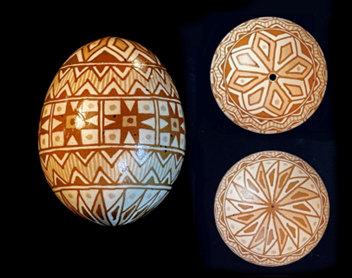
PYSANKY: UKRAINIAN EGGS PROJECT
PYSANKY: Ukrainian Eggs PROJECT
Wednesday, January 18 through Sunday, January 22, 2023 | BUSH BARN ART CENTER
ARTIST DEMONSTRATION: Sunday, January, 22
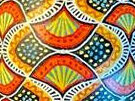
Jenny Orr, the artist, will be present in the gallery Sunday on January, 22 from 12 noon until 2 p.m. and will explain the process and the history behind the creation of pysanky easter eggs.
All proceeds raised from this project will be donated to Salem for Refugees, to provide direct assistance to Ukrainian refugees in our area.
ABOUT PYSANKY BY JENNY ORR
Ukrainian Easter Eggs (pysanky) are made using a centuries old wax-resist (batik) technique. The name comes from the verb pysaty which means “to write” because the egg is not painted but rather “written” with beeswax using a stylus (kistka) before being dipped in dye. Multiple colors are achieved by writing and dipping the egg repeatedly. The designs incorporate many different symbols representing life, fertility, the sun, plants and animals, among other things. However, many of the meanings have changed over the centuries or been lost. Long considered purely as a folk art, pysanky are gaining recognition as fine art now that artists are taking the craft to a new level. Since the Russian invasion of Ukraine in 2022, pysanky have also gained new importance as a symbol of peace and the unique culture of Ukraine.
A design often starts with one of many traditional division patterns. Once this division is selected, smaller detailed patterns and symbols are added. Eggs with the same division pattern can look completely different. Non-traditional division patterns and freehand designs are also common.
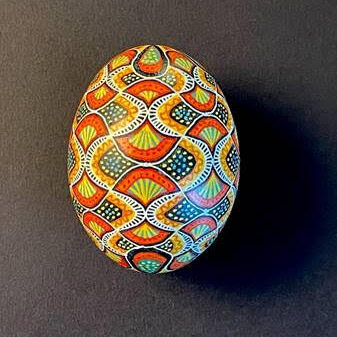
Design 1: This design is based on an egg by the exceptional pysanky artist Mark Malachowski. He used a goose egg which is roughly 3 times the size of a chicken egg. I had to greatly simplify the original design to get it to fit on a chicken egg. The division pattern was unfamiliar to me. After much experimentation, I discovered that the division pattern emerges from many overlapping circles. These circles can be seen on the right drawn with a pencil on a brown egg.
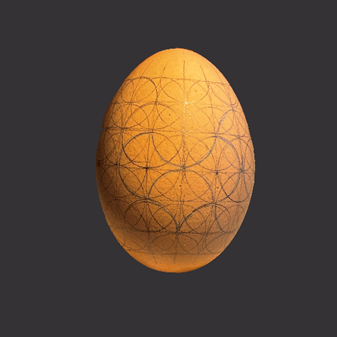

Design 2: The division is called the horizontal band pattern. After the first application of wax, the egg was briefly dipped in vinegar to etch it down to a light brown color. After a second application of wax, the egg was again etched in vinegar to obtain white. No dyes were used.
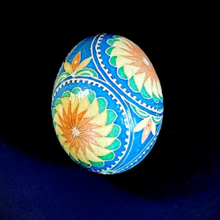
Design 3: This division called the Four Circles pattern. The first dye applied was yellow, followed by orange, green and blue.